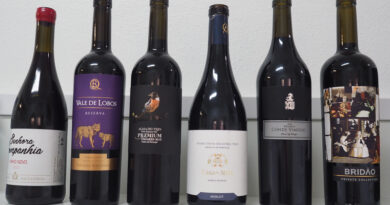My idea of heaven
It’s time to stop hoarding that sweet wine and Champagne, sitting and waiting for good times to roll: there has never been a better time to sup up than today. And why not eat those tins and jars of sumptuous foie gras while you’re about it?
‘My idea of heaven is, eating pâté de foie gras to the sound of trumpets’
Rev Sydney Smith
Foie gras is one of my absolute favourite foods, and what’s more it facilitates heavenly wine pairings. It matches brilliantly with the kind of wines you have long longed to drink but feel obliged to share, and so sit on for year after year like a miserly toad because you never find the right occasion to open them.
I love the gorgeous, sweetly layered golden nectars Sauternes and Monbazillac; I adore Tokaji; I revel in Alsace SGNs; and I’m haunted by sweet Jurançons. It’s just I rarely find the right time to open them. But they make the perfect bedfellows for this truly succulent rich unctuous snack and an added bonus is that foie gras it is remarkably easy to plate up, so it’s the perfect way to begin a dinner party. And it also makes your guests feel a bit spoiled.
You can buy foie gras in many formats, but it we have Nicolas Appert, the father of airtight preservation – jars and cans – to thank for making this delicacy accessible to all. Tins and jars of foie gras have a long shelf-life, and are the simplest way to appreciate it, as long as you choose the right style of foie gras from good producers. It comes from either duck or goose: the former has the stronger flavour and is the most popular, but there is a delicacy to the goose foie gras. Foie Gras hails from Périgord in the Dordogne, an area of Southwest France known for its production of foods made from duck and goose. As an aside, this region has a copious population of Brits, some ten thousand at last count. Truffles and the sweet wine Monbazillac hail from this wooded nature rich region too. It’s easily bought in the UK and has a shelf life of at least eighteen months.
There’s also a further perfect pairing: foie gras and Champagne. This makes an amazing first course, when simply served with salad and brown buttered toast. If I’m serving with a pudding wine I prefer to serve with figs, oat cakes and a fruity jam – something with red berries and an acid line to sever that delicious fat. Another good option for sweet wine and foie gras is to serve it on toasted brioche, which itself has a sweet flavour, with some flakes of sea salt. Epicureans tend to be winos too and many of us have tins of foie gras sitting in the cupboard left over from a carefree French excursion, from the days before the present where you have to fill in five hundred forms and stick sticks up your nose.
Michael and Monika Schuster often serve it at their dinner parties. ‘In our house I mostly serve it as canapés or a light starter,’ says Monika, ideally on toasted rounds of bread or brioche, with a touch of black pepper and salt. Michael usually buys me tins in France. These are cylindrical tins about 4″ in length, about 1 1/4 – 1 1/2 inches in diameter – nicely bite sized, that is. And you slice them about 1/4 inch thick to go on the bread – no butter required!’ And for wine pairings? ‘We usually serve them with as luxury a Champagne as we can afford (most recently with Comtes de Champagne for our 30th wedding anniversary!), or with an off-dry Loire Chenin – a Vouvray as mature as possible. Also (Michael’s preference) we serve them with a good German Kabinett/Spätlese.’
Some other suggested wine pairings:
Sauternes and Barsac. These sweet wines from Bordeaux have a wonderful richness, with lovely aromatics and apricot and spice flavours. They have a rich texture, and work really well complementing the richness of the foie gras.
Monbazillac is another sweet wine from the Southwest, and it’s a little more affordable than Sauternes. It has a rich texture and some of the spicy apricot notes that Sauterne has, but is often a little plumper and softer.
Tokaji is the famous sweet wine of Hungary, and if you get one labelled 5 puttonyos or 6 puttonyos, it will be very rich, sweet and spicy, with exotic flavours but also a good acid backbone.
Jurançon comes in sweet and dry forms, and it’s the sweet one we’re particularly interested in here. Bold, incisive and with keen acidity offsetting the sweetness, it’s a particularly good foil for the richness of foie gras.




